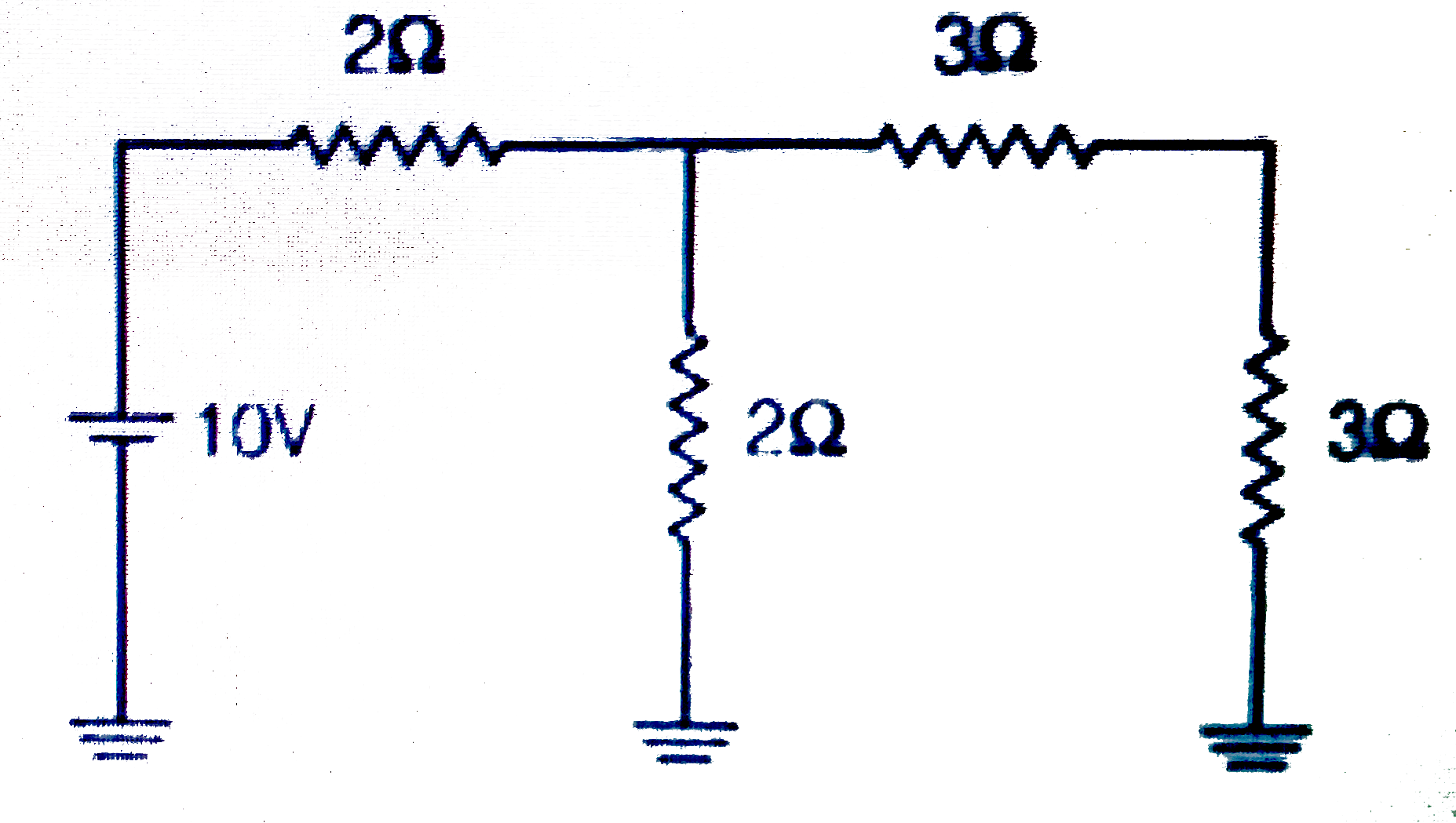The resistance of a coil used in a platinum-resistance thermometer at 0∘C is 3.00Ω and at 100∘C is 3.75Ω . Its resistance at an unknown temperature is measured as 3.15Ω. Calculate the unknown temperature.
The correct Answer is:(20∘C)
To solve the problem of finding the unknown temperature based on the resistance measurements of a platinum-resistance thermometer, we can follow these steps:
Step 1: Understand the relationship between resistance and temperature
The resistance RT at temperature T is given by the formula:
RT=R0(1+α(T−T0))
where:
- RT = resistance at temperature T
- R0 = resistance at reference temperature T0
- α = temperature coefficient of resistance
Step 2: Identify the known values
From the problem statement:
- At 0∘C (which is T0), R0=3.00Ω
- At 100∘C, R100=3.75Ω
- At an unknown temperature T, RT=3.15Ω
Step 3: Calculate the temperature coefficient α
Using the resistance at 100∘C:
R100=R0(1+α(100−0))
Substituting the known values:
3.75=3.00(1+100α)
Dividing both sides by 3.00:
1.25=1+100α
Subtracting 1 from both sides:
0.25=100α
Solving for α:
α=0.25100=0.0025per ∘C=25×10−4per ∘C
Step 4: Use the resistance formula to find the unknown temperature T
Now we can use the resistance at the unknown temperature:
RT=R0(1+α(T−T0))
Substituting the known values:
3.15=3.00(1+25×10−4(T−0))
Dividing both sides by 3.00:
1.05=1+25×10−4T
Subtracting 1 from both sides:
0.05=25×10−4T
Solving for T:
T=0.0525×10−4=0.05×10425=50025=20∘C
Final Answer
The unknown temperature T is 20∘C.
---
The resistance RT at temperature T is given by the formula:
RT=R0(1+α(T−T0))
where:
- RT = resistance at temperature T
- R0 = resistance at reference temperature T0
- α = temperature coefficient of resistance
From the problem statement:
- At 0∘C (which is T0), R0=3.00Ω
- At 100∘C, R100=3.75Ω
- At an unknown temperature T, RT=3.15Ω
Using the resistance at 100∘C:
R100=R0(1+α(100−0))
Substituting the known values:
3.75=3.00(1+100α)
Dividing both sides by 3.00:
1.25=1+100α
Subtracting 1 from both sides:
0.25=100α
Solving for α:
α=0.25100=0.0025per ∘C=25×10−4per ∘C
Now we can use the resistance at the unknown temperature:
RT=R0(1+α(T−T0))
Substituting the known values:
3.15=3.00(1+25×10−4(T−0))
Dividing both sides by 3.00:
1.05=1+25×10−4T
Subtracting 1 from both sides:
0.05=25×10−4T
Solving for T:
T=0.0525×10−4=0.05×10425=50025=20∘C
The unknown temperature T is 20∘C.
Topper's Solved these Questions
- CURRENT ELECTRICITYBook:VMC MODULES ENGLISHChapter:CURRENT ELECTRICITYExercise:PRACTICE EXERCISE-3
Explore 4 Videos
- CURRENT ELECTRICITYBook:VMC MODULES ENGLISHChapter:CURRENT ELECTRICITYExercise:PRACTICE EXERCISE
Explore 11 Videos
- CURRENT ELECTRICITYBook:VMC MODULES ENGLISHChapter:CURRENT ELECTRICITYExercise:PRACTICE EXERCISE-1
Explore 5 Videos
- CAPACITORSBook:VMC MODULES ENGLISHChapter:CAPACITORSExercise:JEE Advance ( Archive ) LEVEL 48
Explore 1 Video
- DC CIRCUITBook:VMC MODULES ENGLISHChapter:DC CIRCUITExercise:JEE ADVANCED ARCHIVE
Explore 68 Videos
Similar Questions
Knowledge Check
The resistance of the wire in the platinum resistance thermometer at ice point is 5Ω and at steam point is 5.25Ω. When the thermometer is inserted in an unknown hot bath its resistance is found to be 5.5Ω. The temperature of the hot bath is
A100∘CB200∘CC300∘CD350∘C
Current in 3Ω resistance is

View SolutionThe resistance of a platinum wire of platinum resistance thermometer at the ice point is 5Ω and at steam point is 5.23Ω. When therometer is insertes in a hot bath, the resistance of the platinum wire is 5.795Ω. Calculate the temperature of the bath?
View SolutionMinimum resistance obtained from two resistors 3Ω and 2Ω is
View SolutionA platinum resistance thermometer reads 0∘ when its resistance is 80Ω and 100∘ when its resistance is 90Ω. Find the temperature at the platinum scale at which the resistance is 86Ω.
View SolutionThe following observation were recorded on a platinum resistance thermometer. Resistance at melting point of ice is =3.70Ω, resistance at boiling point of water at normal pressure is=4.71Ω, and resistance at t∘C=5.29Ω. Calculate
Temperature coefficient of resistance of platinum.
Value of temperature t.
View SolutionThe electrical resistance of pure platinum increases linearly with increasing temperature over a small range of temperature . This property is used in a Platinum resistance thermometer. The relation between Rθ (Resistance at θ K) and R0 (Resistance at θ0K) is given by Rθ=R0[1+a(θ−θ0)], where α= temperature coefficient of resistance. Now, if a Platinum resistance thermometer reads 0∘C when its resistance is 80Ω and 100∘C when its resistance is 90Ω find the temperature at which its resistance is 86Ω.
View SolutionResistance of platinum wire in a platinum resistance thermometer at melting ice, boiling water and at a hot bath are 6Ω,6.5Ω and 6.2Ω, respectively. Find temperature of hot bath.
View Solution